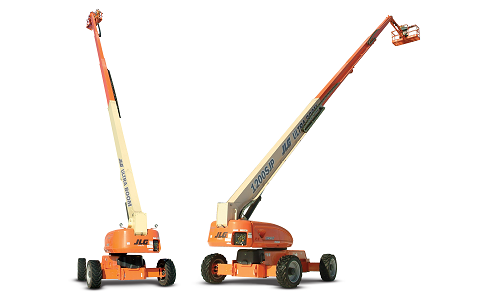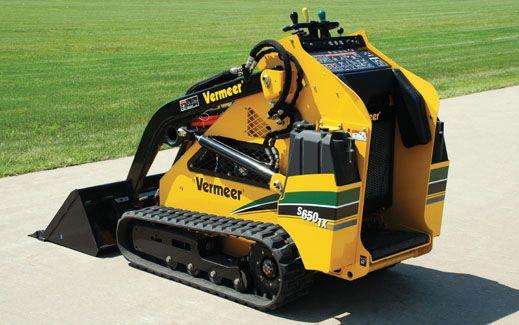Aerial Lift Rental: Versatile Training Solutions for High-Access Jobs
Aerial Lift Rental: Versatile Training Solutions for High-Access Jobs
Blog Article
Maximize Your Budget Plan by Comprehending the Prices Related To Building And Construction Equipment Rentals
Understanding the complete scope of expenses related to building and construction devices rentals is important for maximizing your budget. While the initial rental cost may seem straightforward, many additional costs-- such as transport, gas additional charges, and maintenance-- can rapidly build up, impacting your financial preparation. Being conscious of various charges and the ins and outs of rental contracts can help avoid unforeseen financial problems. What techniques can be employed to successfully take care of these expenses and guarantee an extra effective rental experience?
Summary of Rental Costs
When considering building and construction devices rentals, comprehending the associated costs is vital for effective budgeting and task planning. Rental expenses can vary dramatically based upon several variables, including tools type, period of rental, and area. The initial rental charge often shows the tools's market demand and its associated functional capacities, influencing the overall cost.
In addition to the base rental price, supplementary prices may arise, such as transport costs, gas additional charges, and upkeep costs. It is crucial to make up these added expenditures to accurately examine the complete cost of leasing equipment. Moreover, the rental duration can influence pricing; longer leasings may receive affordable rates, while short-term leasings could sustain greater daily charges.

Malfunction of Rental Prices
A detailed understanding of rental rates is vital for specialists and job managers intending to maximize their budget plans. Rental prices for building and construction equipment commonly consist of several components, including base rates, time-based costs, and usage fees.
Base prices are the core costs connected with the rental of the devices, typically figured out by the kind and dimension of the machinery. These rates can differ substantially, affected by variables such as devices need, schedule, and regional market trends. Time-based charges, which might be daily, weekly, or monthly, serve to accommodate various project timelines and rental periods.
Additionally, rental rates might include use fees, which are applicable when equipment is utilized past a specified limit, guaranteeing that the rental firm can account for wear and tear. Seasonal need fluctuations can likewise affect rental prices, with peak construction periods normally commanding greater prices.
Additionally, understanding the rental business's policies relating to upkeep and insurance coverage can provide additional insight into the general cost framework. By assessing these components, service providers can make informed choices, making certain the option of rental equipment lines up with both job requirements and budget plan restrictions.
Added Costs to Think About
Comprehending the complexities of additional fees is vital for professionals to manage their general rental costs successfully. Past the common rental prices, numerous auxiliary fees can substantially affect the overall expense of devices leasing. These fees typically include delivery and pickup charges, which can differ based on distance and logistics associated with transferring the equipment to and from the job site.
In addition, some rental business may impose gas additional charges if the tools is returned with less gas than when rented out. It why not try here is additionally important to recognize potential cleaning charges, especially for customized devices that needs detailed upkeep after use.

Thoroughly reviewing the rental agreement and clearing up these additional costs in advance can aid professionals make sure and prevent unforeseen expenses that budgets continue to be intact throughout the task lifecycle.
Repair And Maintenance Expenses
Regular upkeep and repair costs are usually neglected aspects that can considerably affect the general cost of construction equipment leasings. When renting out equipment, it is critical to consider not just the rental fees yet also the prospective prices related to maintaining the equipment in optimal operating problem.
Many rental business consist of standard upkeep as part of the rental arrangement; however, much more considerable repairs or unforeseen failures can lead to extra costs. It's important to examine the rental agreement carefully to understand what maintenance services are covered and what obligations fall on the renter.
In addition, devices that is not well-maintained can lead to inefficiencies on duty website, potentially enhancing and triggering delays job costs. To minimize these dangers, it is a good idea to carry out normal evaluations and maintain open interaction with the rental provider regarding any kind of problems that occur during use.
Insurance Policy and Responsibility Expenses
Insurance coverage and obligation costs are crucial components that can significantly influence the general cost of construction tools services (aerial lift rental). These prices make sure that both the rental company and the customer are secured from potential economic losses developing from accidents, damages, or theft throughout the rental period

In addition, clients must recognize any type of deductibles or exemptions in the insurance policy, as these can influence potential out-of-pocket costs. Recognizing the terms of any type of insurance policy coverage is crucial to stay clear of unexpected expenses. Inevitably, budgeting for insurance and obligation costs can aid ensure a smoother rental experience and secure versus economic risks related to building tasks.
Conclusion
In conclusion, a detailed understanding of the prices linked with construction equipment leasings is necessary for reliable spending plan management. By analyzing rental rates, extra charges, maintenance costs, and insurance coverage needs, people and organizations can reduce unforeseen expenditures. This tactical method not only enhances cost-effectiveness but also ensures that projects proceed efficiently and successfully. Eventually, notified decision-making concerning equipment rentals contributes to the total success of building and construction ventures.
Rental costs can differ substantially based on a number of factors, consisting of devices kind, period of rental, and area (boom lift rental). The rental duration can impact rates; longer leasings might qualify for affordable rates, while temporary leasings could incur greater everyday costs
By carrying out thorough research study and engaging with credible rental companies, service providers can efficiently browse the complexities of rental prices, ultimately maximizing their economic resources.
Past the standard rental rates, numerous additional fees can significantly affect the complete cost of devices leasing. Rental firms frequently give liability insurance coverage that covers injuries to 3rd events or damage to residential property, while tools damage insurance coverage can cover the expense of repairs or substitute if the rented equipment is damaged.
Report this page